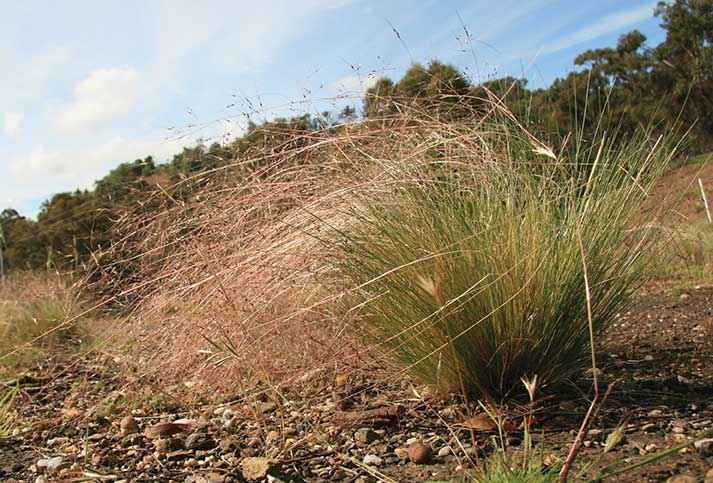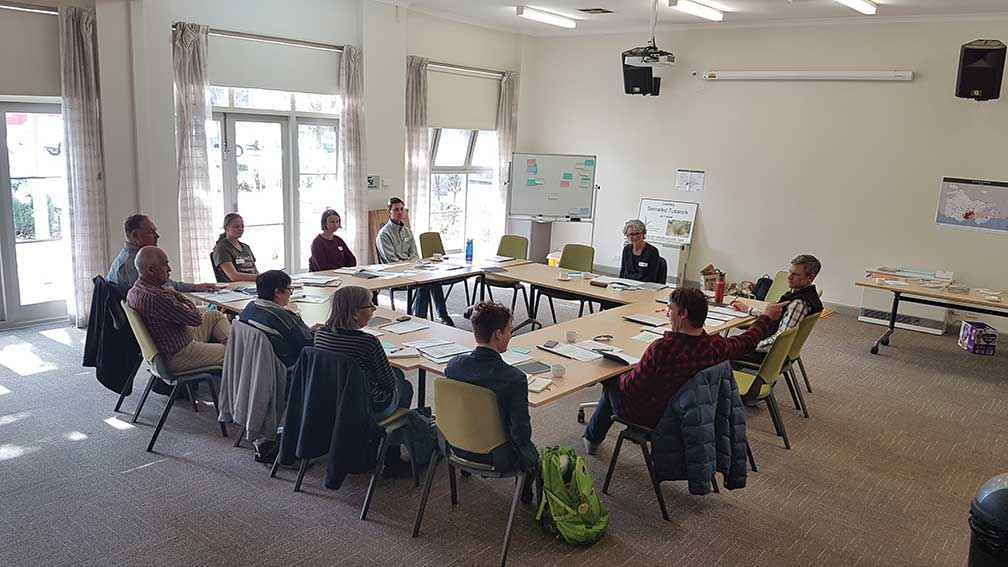Victorian Landcare Magazine - Summer 2020, Issue 77

Serrated tussock now covers more than 240,000 hectares of land in Victoria. Large infestations require ongoing management and the integration of several control techniques. Each mature serrated tussock plant can produce 100,000 seeds in a season, blowing up to 20 kilometres from the parent plant.
Over winter the Victorian Serrated Tussock Working Party (VSTWP) hosted a free workshop on community engagement, knowledge and practice change with biosecurity consultant and engagement expert Lisa Adams.
The workshop was funded by the Federal Government Agricultural Competitiveness White Paper. The VSTWP decided on a workshop format due to past successes with face-to-face engagement.
The 13 attendees ranged from students studying conservation and land management to local government staff and landowners who have been impacted by serrated tussock. It was a terrific opportunity for attendees to share knowledge and experience in a professionally facilitated, peer-based learning environment.
It was widely agreed by those who attended, and gave feedback, that the workshop increased their knowledge and ability to engage with the community on managing serrated tussock. It also provided an opportunity for the community champions to learn some new ideas that can help make a difference in engaging others.

Above: The serrated tussock workshop empowered participants to engage with their communities on raising awareness of weed management.
According to workshop participant Martin Deering, attendees worked with others facing similar community engagement challenges.
“It was great to see people getting refreshed and motivated. It was all about making a difference in their respective communities and being the champion to engage with others facing similar management issues,” Martin said.
The workshop attendees are planning to continue networking and meeting on a regular basis to review their implementation goals.
The VSTWP advises land managers that having competitive pasture and good ground cover is one of the most important aspects to controlling serrated tussock. Lower spring rainfall has resulted in reduced pasture growth, so care must be taken to reduce overgrazing and ensuring fodder is free of weeds.
According to VSTWP chair John Burgess identifying serrated tussock isn’t difficult.
“Serrated tussock has a fine leaf and will roll smoothly between the index finger and thumb, while native tussocks feel as though they have flat edges. The leaves also feel rough when you run your fingers downwards due to fine serrations,” John said.
Ivan Carter is VSTWP communication officer.
For more information go to www.serratedtussock.com or email info@serratedtussock.com